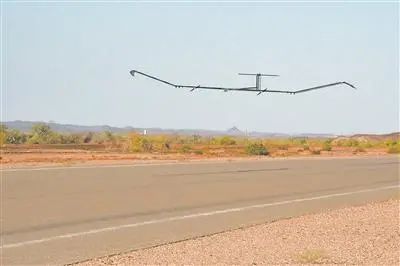
Zephyr is a fixed-wing high-altitude long-endurance unmanned aerial vehicle that can serve as a high-altitude platform station.
Image source: AALTO HAPS official website
According to a report from the Science and Technology Daily in Tokyo on March 16 (Reporter Li Yang), Japan’s Nippon Telegraph and Telephone Corporation and its joint venture Space Compass recently announced that they have completed LTE data communication (quasi-4G communication) between a high-altitude platform station (HAPS) and ground smartphones. This experiment is a world first and will take place in Laikipia County, Kenya, in February 2025. During the experiment, radio waves emitted from the ground LTE base station were relayed by the HAPS and transmitted to ground smartphones, confirming a data transmission rate of over 4.66 megabytes per second, achieving stable communication coverage from the HAPS aircraft to fixed points on the ground.
HAPS, also known as a “flying base station,” is an unmanned aerial vehicle that can remain airborne at an altitude of about 20,000 meters for extended periods, primarily operating in the stratosphere at altitudes of 18 to 25 kilometers, far above commercial aircraft and weather systems, and is considered an important component of future communication infrastructure.
HAPS can use solar energy or fuel cells as power sources without the need for refueling. The HAPS aircraft used in this experiment is the small fixed-wing HAPS “Zephyr” manufactured and operated by AALTO HAPS. Zephyr was co-developed by Airbus Group and the U.S. Army and set a record for the longest unmanned flight duration of 64 days in 2022, known for its efficient solar power system and lightweight design. This means that in the future, HAPS can serve as “aerial base stations,” seamlessly connecting to ground communication networks.
Compared to traditional ground base stations and low Earth orbit satellite communication systems, HAPS offers advantages such as wide coverage, low deployment costs, and high flexibility, making it particularly suitable for remote areas, ocean regions where ground base stations are difficult to cover, and emergency communication scenarios where base stations have been damaged after disasters.
This article is sourced from: Jintai Information
Copyright belongs to the original author. If there is any infringement, please inform us for deletion.




Follow our public account for more exciting content